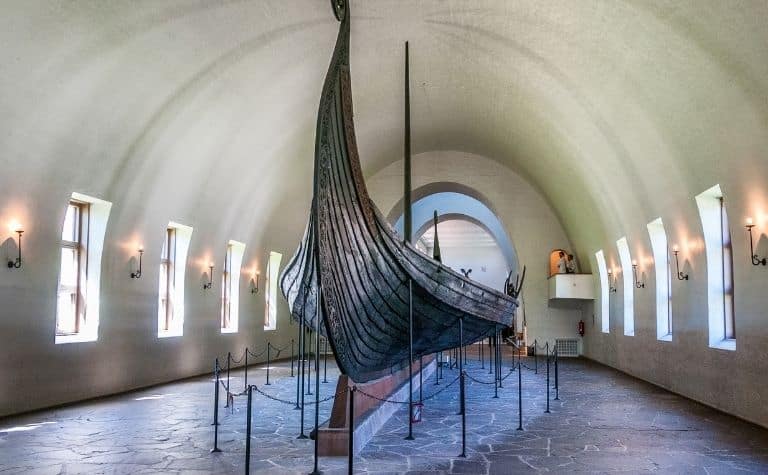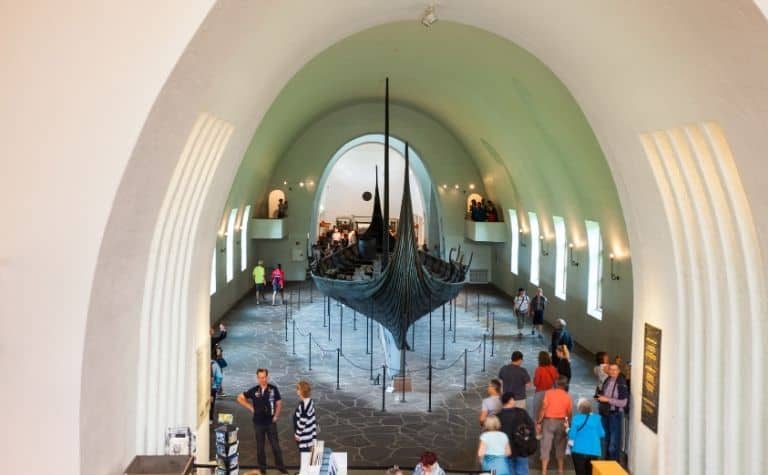The monikers Norsemen and Vikings commonly refer to the marauding warriors from Scandinavia who sailed their iconic longboats to foreign shores and ravaged Northern Europe during the Middle Ages.
Although these names are often used interchangeably, there are distinctions to be made as far as which specific groups of people they refer to, with Norsemen being broader in scope than Vikings.
In common use, Norsemen refers to ethnic groups of people from medieval Scandinavia, while Vikings signify those who took to the seas to raid, trade, or explore.
The terms Norsemen and Vikings are subject to many interpretations, and differences in their meanings range from slight to substantial.
If ever an entire people were characterized by one aspect of their rich history, it would be the Vikings.
They are more often viewed through the Viking lens as blood-thirsty heathens who sacked defenseless Christian monasteries than the cosmopolitan travelers, savvy traders, or courageous explorers that they were as Norsemen.
Misperceptions abound in both respects, starting with the stigma of the term Viking itself.
Also see Vikings vs Samurai: What’s the Difference? to learn more.

Is There a Difference between Norsemen and Vikings?
The Viking Age encompassed roughly three centuries from the year 800 A.D. through the year 1066.
Within that relatively short span of history, seafaring people from medieval Scandinavia (a region now comprised of the modern-day nations of Denmark, Norway, and Sweden) exerted incredible influence throughout Northern Europe through military, commercial, and social means and left a lasting legacy. [1]
To the majority of those who came into contact with them, these people from the far northern reaches of Europe came to be known as Norsemen or Vikings.
The use of one term over the other often depended on the particular circumstances of the encounter.
The Rise of the Northmen
The raiders, traders, explorers, and, in some cases, settlers, who made their presence known throughout Medieval France, Britain, Ireland, and other regions of Europe during the Viking Age came from Scandinavia, which lay to the far north. (Also see The Viking Shield: The Meaning of Their Shape, Color, and Patterns)
The term Norsemen (and its counterpart, Northmen) was coined as a way to incorporate the origin of these enigmatic people into the name that was used to identify them.
Unlike the term Vikings, which carried unmistakable connotations of horrific violence and loss of life and property, the moniker Norsemen was more innocuous, broader in scope, and perhaps even more accurately reflective of the Scandinavian people themselves.
Only a fraction of them ever took to the high seas in pursuit of riches, and even fewer yet ever raised a sword on the field of battle. [2]
Also, see Did Viking Helmets Have Horns? to learn more.

The Way of the Vikingr
It is fair to say that regardless of connotation or association, both Norsemen and Vikings left their homelands in Scandinavia in search of something better.
It can also be said, as so succinctly stated by one historian, that “all Vikings were Norsemen, but not all Norsemen were Vikings,” meaning that the term Vikings most accurately refers to a specific group of people engaged in specific types of activities. [3]
The word Viking has its origins in the Old Norse language that was spoken by Scandinavians over a millennium ago, specifically the terms:
- Vikingr, (plural Vikingar) which referred to a person who went on long sea excursions to distant lands, usually with a group of like-minded Vikingar, and for purposes that may have included raiding but not exclusively so
- Viking, which was a verb referring to activities (not necessarily raiding or pirating) undertaken by a Viking
It is important to keep in mind that because the Vikings did not record their own written history, there is very little basis upon which to state conclusively in what particular manner or with what specific meanings these two terms were used prior to and during the Viking Age. [4]
There are alternative theories as to the Old Norse origins of the term Vikings. These include:
- The Old Norse word Vikingr, meaning an adventurer or raider who took to the sea, derives from the root vik, which refers to an inlet or bay from which a seagoing vessel would be launched [5]
- The root word vica refers to the act of rowing a boat or vessel, and therefore a Viking is a person who undertakes the rowing as part of a group who share this duty through shifts [6]
Unfairly or not, sagas and literary works written centuries after the fact have cemented the association of the term Vikings with violence and bloodlust in the worst light and unwelcomed conquerors and settlers in the most favorable light.
Despite their many accomplishments as a society and the lasting contributions they made to cultures around Europe, the Vikings will always be known as seafaring warriors.
Also see Where Was the TV Show Vikings Filmed? to learn more.
The Vikings Weren’t All Norse
The terms Norsemen and Vikings refer to certain people as a collective.
The former is a catch-all designation for medieval Scandinavians, while the latter refers to a group of individuals identified largely by their vocation.
The underlying assumption for both names has been that they were made up of homogeneous people, i.e., people from regions that now comprise Denmark, Norway, and Sweden.
As modern scientific studies have shown, however, the Norsemen and Vikings were not all blond-haired and blue-eyed.
In fact, it turns out that they were not all Scandinavian either.
DNA analysis of the skeletal remains of Vikings recovered from areas throughout Scandinavia, the United Kingdom, and Greenland have revealed genetic markers indicating Southern European and Asian ancestry. [7] [8]
Whether they were called Norsemen or Vikings, it turns out that some of them had family ties to lands thousands of miles away from Scandinavia.
The Three Branches of Vikings
The Vikings hailed from Scandinavia, which during the Middle Ages was comprised of a patchwork of territories (which sometimes battled each other) led by local chieftains and warlords.
It was not until the rise of monarchy and subsequent unification of these mini kingdoms that the nations of Denmark, Norway, and Sweden came into being.
Although they spoke the same language, worshiped the same pantheon of Norse gods and goddesses, and shared common, fundamental beliefs and practices, the Vikings from these different regions developed their own unique identities and carved out differing niches in world history.
Some factions of Vikings even had their own monikers.
Here is a quick look at how the three branches of Vikings differed from each other:
The Danish Vikings
Known widely as the Danes, in the eyes of many, the Vikings from Denmark had the greatest influence in terms of political power and military might.
Their warmongering efforts were focused on Western Europe, specifically France and England.
Signature conquests of Danish Vikings included substantial portions of England (where Danelaw was established) and the Normandy region of France (named after the Normans, which derived from the Frankish term for “Northmen”)
The Norwegian Vikings
Although their territorial conquests were not as well-chronicled as those of their Danish counterparts, the Vikings who hailed from southern Norway were reputed to be the fiercest warriors in battle with a particular affinity for the battle-ax as their weapon of choice.
The famed Viking raid on Lindisfarne is believed to have originated from Norway.
Norwegian Vikings were explorers without peer, having reached distant lands, including Iceland, Greenland, and even North America.
The Swedish Vikings
While the Danish and Norwegian Vikings set out in their iconic longboats toward western conquests, the Swedish Vikings looked to the east.
And unlike their Scandinavian brethren, the Swedes looked to establish themselves through commerce and trade, traveling as far as the Middle East.
The Swedish Vikings settled in areas that are parts of modern-day Ukraine and Russia and were known as the Rus (from which Russia gets its name).
They were also known as Varangians, and their enlistment to protect the ruler of Constantinople from outside threats led to the formation of the famed Varangian Guard of the Byzantine Empire.
Conclusion
Whether they are known as Norsemen, Rus, Danes, or by any other name, the Vikings left an indelible and everlasting mark on world history.
References:
[1] Source
[2] Source
[3] Source
[4] Source
[5] Source
[6] Source
[7] Source
[8] Source
[9] Source
